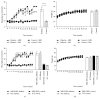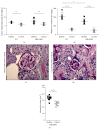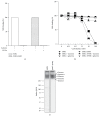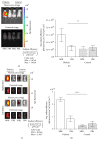Diabetes Is Associated with Increased Autoreactivity of Mannan-Binding Lectin
- PMID: 28349070
- PMCID: PMC5350336
- DOI: 10.1155/2017/6368780
Diabetes Is Associated with Increased Autoreactivity of Mannan-Binding Lectin
Abstract
Mannan-binding lectin (MBL) has been reported to be involved in the pathophysiology of diabetic nephropathy. MBL is a pattern-recognition molecule of the innate immune system that initiates the lectin pathway of the complement system upon recognition of evolutionary conserved pathogen-associated molecular patterns or to altered self-tissue. Our group have previously shown direct effects of MBL on diabetes-induced kidney damage, and we hypothesized that MBL may cause autoactivation of the complement system via binding to neoepitopes induced by hyperglycemia. In the present study, we induced diabetes in MBL knockout mice and in wild type C57BL/6J mice by low-dose streptozotocin injection and measured blood glucose and urine albumin-to-creatinine ratio to monitor development of diabetes. After 24 weeks, fluorescently labelled recombinant MBL was injected intravenously in diabetic MBL knockout mice after which the distribution was investigated using in vivo fluorescence imaging. Mice were subjected to in vivo and ex vivo imaging 24 hours after injection. MBL was found to accumulate in the kidneys of diabetic mice as compared to healthy control mice (p < 0.0001). These findings support the hypothesis of a significant role of MBL and the complement system in the pathophysiology of diabetic nephropathy.
Conflict of interest statement
The authors declare no conflict of interests.
Figures





References
-
- European Renal Association And European Dialysis and Transplant Association. ERA-EDTA Registry-Annual Report 2013.
-
- USRDS. 2014 USRDS Annual Data Report Volume 2: End-Stage Renal Disease. 2014;2
MeSH terms
Substances
LinkOut - more resources
Full Text Sources
Other Literature Sources
Medical
Miscellaneous

